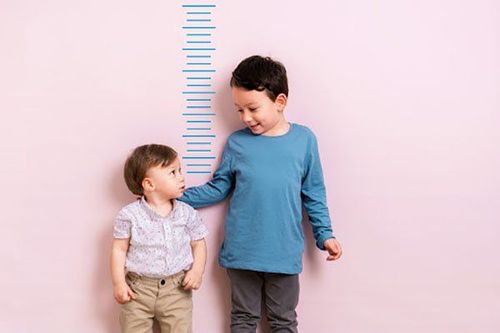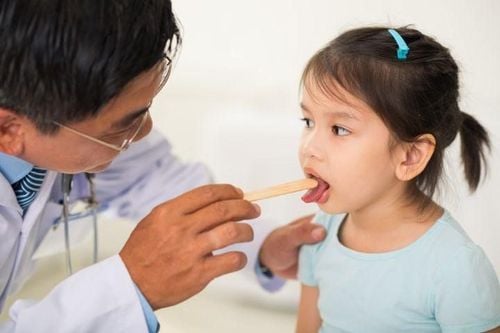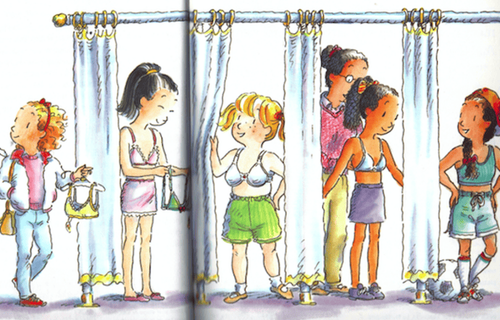This is an automatically translated article.
Activities such as playing, learning ... can all be applied to help 4-year-olds have many development opportunities. Therefore, parents need to be ready to work with their children to learn the best skills and knowledge to help them develop more comprehensively in the future. To do this, parents must understand the key developmental milestones of their children, especially at the age of 4.
1. Physical development of 4-year-old children
How does a 4-year-old child develop physically? The height and weight of a 4-year-old child are considered as indicators to help assess whether the child's development is correct according to the standards. So a lot of parents are interested in these two indicators. How tall and heavy is a 4-year-old? For 4-year-old children, the standards for height and weight will be monitored according to the WHO scale:
Girls with normal weight 16.6 kg and height 102.7 cm
Boys 4 years old weigh how heavy ? The boy has a normal weight of 16.3 kg and a height of 105 cm.
Children's physical development at this stage can help children to be able to perform activities such as one-legged hopscotch, flute-foot jumping, brushing their own teeth, using spoons and spoons...
2. The process of cognitive development of 4-year-old children
Most children at this age begin to absorb abstract concepts such as understanding why day and night are different, traffic lights, and some numbers or letters. ...4-year-old children are very eager to learn, which is shown by children listening very attentively to people's conversations, or observing their surroundings... Therefore, guiding and teaching children at this stage. This section is most effective, so it should be done while learning and playing, such as playing word or number recognition quizzes, or giving children simple puzzles... In addition, parents and relatives in Families should spend time talking with children, answering children's questions. In this way, children will learn more and more effectively.
When the child is 4 years old, his perception can be realized:
The child can speak more clearly, coherently and understandably The child begins to use questions such as: When, how much, why. .. and children are very curious about things and phenomena around them. Children gradually understand difficult aspects such as distinguishing good or bad quality, or small or large quantity... Children can identify colors and name them correctly, or they can correctly name the animals that children see At this stage, children begin to remember simple details of the story,...

Trẻ 4 tuổi phát triển như thế nào là vấn đề được nhiều bà mẹ quan tâm
3. The process of developing motor skills of 4-year-old children
4-year-old children have marked progress when performing difficult manipulations and at the same time, children also control and coordinate flexibly their hands and feet. At this stage, children can perform motor skills including:
General motor skills of 4-year-olds: Children at this stage, their motor abilities have gradually improved, so children There is less risk of falling or hitting objects when children run and play. In addition, children can also go up and down stairs skillfully... Fine motor skills of 4-year-olds: Children will have the ability to coordinate hand-eyes, the ability to string and conjugate quite well. When eating, children already know how to use spoons, chopsticks, or can dress themselves, wear shoes... and these children's activities are done more neatly and quickly.
4. The process of developing language skills of 4-year-old children
Children this age have a vocabulary of each between 500 and 1000 words. However, the number of words children use may be less than this number. But children can still respond fluently to long sentences, which can be longer than 5 words, or they can summarize the day's story that they met or imagined.
With difficult consonants such as l, s, r, v, d, children begin to use them more proficiently.
5. The emotional development of 4-year-old children
How does a 4-year-old child develop? Children at this age begin to control their emotions quite well. And children actually express a clear desire and even want to do as many things on their own as possible. Therefore, parents can ask the child to do certain tasks that the child can do.
Important emotional milestones that a 4-year-old child may experience include:
Children are clearly aware of the emotions of their parents, relatives and people around them. Children can learn about emotions such as jealousy, excitement, anger and even fear During this period, children can concentrate more when playing games or may try to play games to win.

Trẻ 4 tuổi cao và nặng bao nhiêu và các mốc cảm xúc của trẻ là vấn đề cha mẹ cần biết
6. The process of developing social skills
At the age of 3, children often have unusual tantrums, also known as crises at the age of 3, by this stage these states have gradually decreased. In addition to children enjoying playing with their parents and grandparents, children begin to find friends of the same age to play.
At this stage children develop fairly good social skills including
Children easily share toys or food with their peers. Children can look to trusted adults for help when they are having difficulty Children begin to establish relationships with peers of the same age. In addition, most 4-year-olds can begin to perceive their gender. Your baby may wonder why his friend pees sitting down or vice versa. When this is the case, parents should not be too worried or may have a negative reaction to this information. Parents can calmly try to explain this difference to their children, and need to use exact body part words when explaining to children.
Parents should also avoid scolding or punishing children if they touch their genitals. At that time, please explain to the child about the swimwear area and explain to the child in detail that no one other than the parents can touch this area of the child and the child must not touch this area of yours. Clear explanations will help children know how to protect themselves and avoid the risk of abuse.
7. Some abnormal signs in the development of 4-year-old children
Each child develops differently. However, not so that parents ignore abnormal signs that affect certain developmental milestones of their children. For example: The child cannot jump and stomp his feet, or the child can hardly draw or write even though he scribbles. Or do not use the words that address children to parents and grandparents correctly. Learning the child is not interested in interactive games, Or the child is not interested in other children or people not in the family. Or the child may react to protest to get dressed, or go to sleep, or go to the toilet, ...
Caring for, protecting, nurturing a child is a long process, so parents should be friends Helping children develop their physical and mental abilities. If you notice that your child has unusual signs for his age or has difficulties in caring for and teaching him or her, you can go to Vinmec International General Hospital to get help from doctors and nurses. Psychologists.
Children of school age need to be supplemented with elemental zinc/day so that they can eat well, reach the correct height and weight and exceed the standard. Zinc plays a role in affecting most biological processes taking place in the body, especially the breakdown of nucleic acids, proteins... Organs in the body when zinc deficiency can lead to a There are a number of diseases such as neurological disorders, irritability, etc. Therefore, parents need to learn about the role of zinc and guide them to appropriate zinc supplements for their children.
In addition to zinc, parents also need to supplement their children with other important vitamins and minerals such as lysine, chromium, B vitamins,... errands.
Please regularly visit Vinmec.com website and update useful information to take care of your baby and family.













